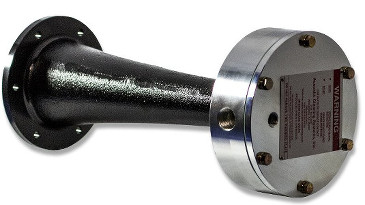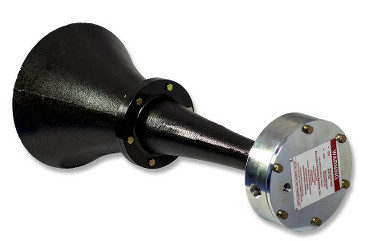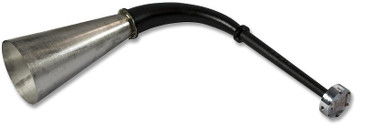Magnum
Sonic Horn

The Magnum acoustic cleaner from ACS uses compressed air to flex a titanium diaphragm to produce pressure pulses that are amplified by the bell. The resulting low-frequency high-energy sound waves that are emitted resonate and dislodge particulate deposits. The displaced particulate deposits are then removed by gravity and/or gas flow.
Advantages of Magnum Model
- Low Initial Investment
- Easy Installation
- Low Installation Cost
- Low Maintenance Cost
- Low Operational Cost
- No Structural Damage
- No Mechanical Wear on Equipment Surfaces
- No Corrosion or Blockage
- Cleaning of Inaccessible Parts
- Continuous Plant Operation
- Design & Installation Expertise from the ACS Professionals
| Model | Magnum |
| Fundamental Freq | 75 Hz |
| Output Power | 142 db |
| Weight | 119 lbs |
| Length | 63 inches |
| Air Requirements | Pressure - 90 PSI Consumption - 73 SCFM |
| Boilers | Prevents particulate deposit build-up and increases heat transfer efficiency |
| Precipitators | Prevents:
|
| Selective Catalytic Reduction (SCR) | Prevents deposit build-up on catalyst modules |
| Economizers | Prevents deposit build up on boiler tubes |
| Baghouses | Prevents:
|
| Hoppers / Silos | Prevents:
|
| Ductwork / Breeching | Prevents:
|
| Fans | Prevents out of balance conditions |
| Air Pre-Heaters | Prevents particulate deposit build-up and increases heat transfer efficiency |
Other Sonic Horn Models
Applications
Acoustic cleaners provide an effective solution to buildup and material flow problems within a wide range of industries.
Learn More
Projects
Our acoustic cleaners cover a wide range of applications. Check out these pictures of some of our installations.
Learn More






